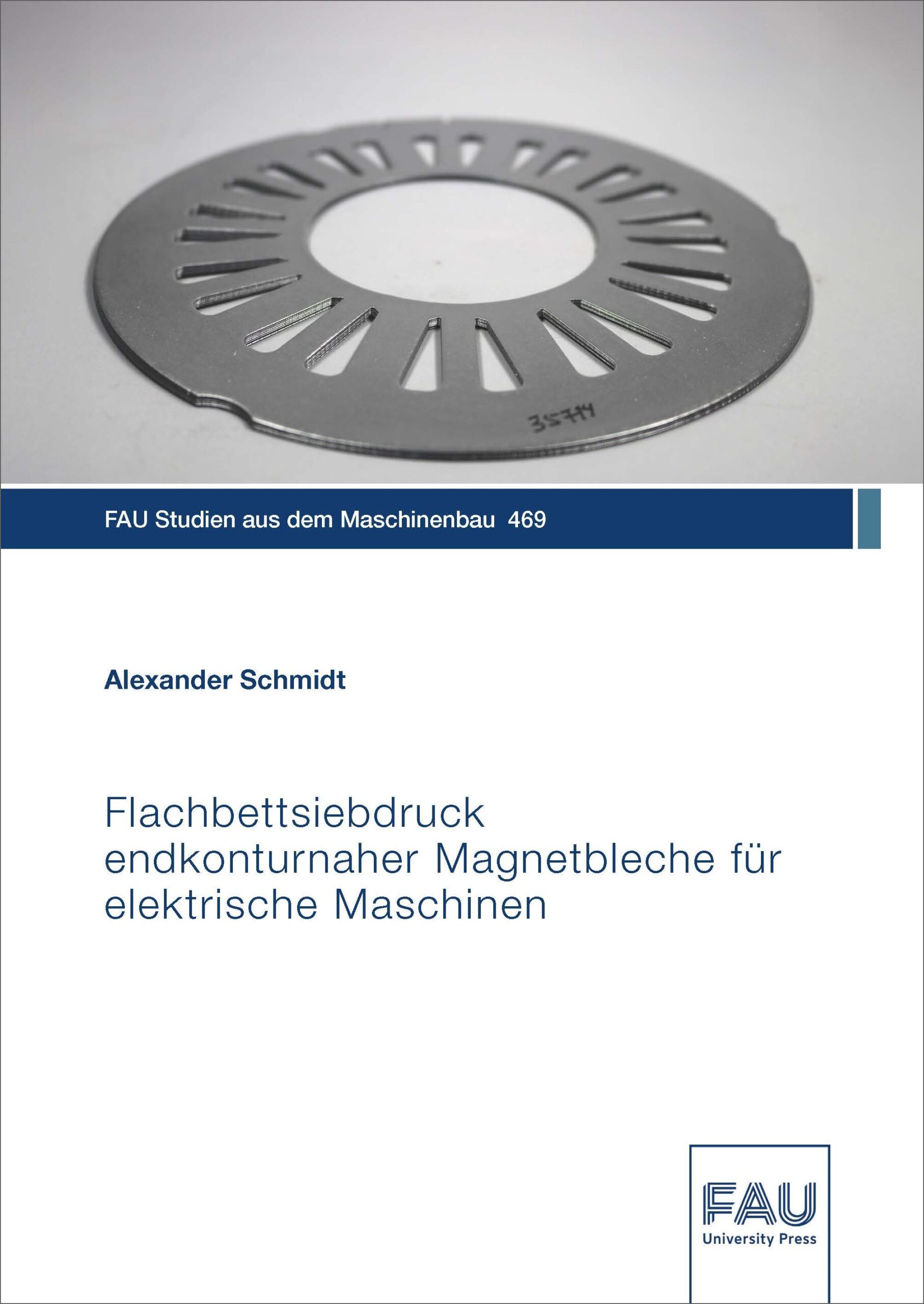Description
The demand of resource-efficient production and energy-efficient operation of electrical machines is growing constantly as a result of the increased use of renewable energies, the ramp-up of electromobility and automated and electrified industry. Electric motors are the major consumer of electrical energy in the European Union. There is thus a strong demand for research and development into new manufacturing processes and materials to improve the efficiency of electrical machines. Iron losses, which occur in the stator and rotor cores of electric machines, are the dominant cause of losses in electric drive systems for battery electric vehicles and many highperformance industrial applications. Sheet stacks are conventionally manufactured in large scale using combined stamping and stacking technologies. This causes large amounts of scrap due to sheet metal waste, and the edges of the magnetic sheets are plastically deformed, thus damaging the material. This thesis investigates a new additive manufacturing approach for electrical steel laminations using flatbed screen printing with subsequent sintering. This process offers a high degree of geometric design freedom for magnetic sheets, enables a wide selection of alloys according to the specific requirements and leads to a high degree of material utilization due to near-net-shape production. This process offers great geometric freedom for the sheet design, enables a wide range of alloys to be selected according to the specific requirements and results in high material utilization due to near-net-shape production. The entire process, from the iron powder to the sintered magnetic sheet, is considered holistically and appropriate materials and process parameters are systematically investigated.


Reviews
There are no reviews yet.